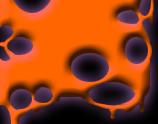|

|
| Scientific Name: Anolis Carolinensis |
| |
Statistics |
| Natural Location: |
South Eastern United States |
| Average Lifespan: |
2 - 3 Years |
| Estimated Size: |
7" to 8" |
| |
| Captive Care
Information |
| |
Food & WaterWill mainly eat feeder insects: crickets,
mealworms, wax worms, butterworms (teboworms), flies, even earthworms. Some will eat small pieces of fruit (banana, oranges,
etc.). Mist the enclosure twice a day, as they will drink the mist off the leaves. You can also use a drip system. Some may
learn to drink from a shallow dish.
Lighting, Temperature & Humidity
Keep the temperature during the day around 77 degrees F to 86 degrees F. At night, the temperature
should be kept around 65 degrees F to 74 degrees F. A broad-spectrum heat bulb, and a flourescent bulb should suffice for
the Green Anole.
Housing
Green Anoles do not need much space, although you do not want to cramp them. A simple 2' x 2'
x 2' enclosure should work well, using a glass aquarium with screen top, or full-screen. A course substrate of gravel covered
with a mix of peat moss and play sand works well. You should include real plants in the enclosure for them to climb on, as
well as a few branches.
BreedingThese lizards breed in the late spring to early summer
months. They will normally lay 2 eggs per clutch, and many clutches throughout the summer months. Make sure to include leaves
or some other vegatation on teh ground, as they will lay the eggs underneath. Allow 60 - 90 days for the eggs to hatch. It
is recommended that you remove the babies after they hatch, or before for incubation. In many cases, feeder insects and even
the adults will eat the young. |
|

